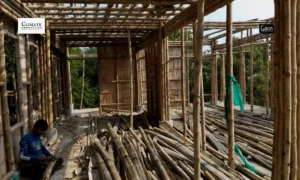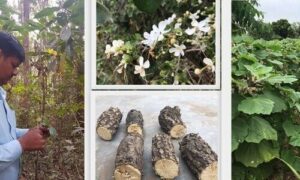Using satellite data to assess the areas facing drought conditions in Maharashtra over the years, a study has concluded that there has been a significant increase in the areas classified as high, very high, or severe drought-prone.
The study titled Monitoring drought pattern for pre- and post-monsoon seasons in a semi-arid region of western India published in the peer-reviewed Springer Nature journal in April this year, documented the increasing drought condition in Latur district from 1996 to 2016 using satellite data across several parameters, including vegetation and water.
“Beyond Latur, authors of the study have warned that other districts in Marathwada and parts of north Maharashtra, such as Beed, Osmanabad, Jalna, Jalgaon, Aurangabad, Nanded, and Dhule, are vulnerable as well, with agrarian communities susceptible to catastrophic effects of droughts on various crops such as sorghum, pearl millet, sugarcane, and others,” the press statement issued for the study mentioned.
Atiqur Rahman, corresponding author of the study and Professor at Department of Geography, Faculty of Natural Sciences, at the New Delhi-based Jamia Millia Islamia that the main reason behind frequent droughts and the rising area under drought in Latur is climate change induced declining monsoon rain in the region.

“There is an immediate need for the State and Centre to take up drought mitigation planning as a matter of national interest as countless lives are at stake,” Rahman added.
Over the past month (June 1 to July 1 2022) Latur has received 30 per cent excess rainfall but forecasts by the weather bureau indicate that a drop in active rainfall is expected through the rest of the season.
According to India Meteorological Department (IMD), if a region experiences rainfall less than 10 per cent of the normal rainfall in India, it is a drought-prone region.
“The historical rainfall data of Latur district shows that it experiences less than 10% rainfall a year twice every 5 years. Severe droughts in 2015-16 and 2016-2017 have had grave consequences on agriculture and various domesticated animals,” the press statement mentioned.
Key recommendations from the study
* The study recommends that researchers and planners must prioritise monitoring and forecasting draughts to reduce the losses caused due to their frequent occurrences.
* The state and union government has to think about drought mitigation in the region as this is a matter of national interest.
* There is an urgent need of developing a strong integrated drought monitoring tool to mitigate the negative effects of drought on agricultural and water resources in India’s north-eastern area.
* The state government needs to focus on the identification and management of existing water bodies at block and village levels. Further, canal irrigation may be promoted in the region for dealing with the scarcity of water for irrigation.




















